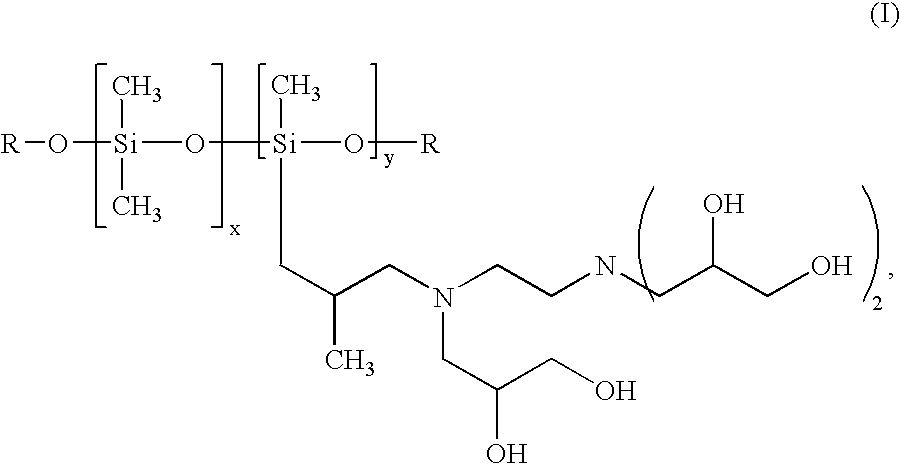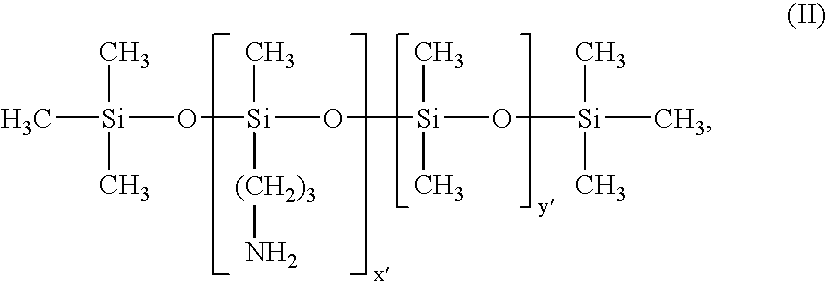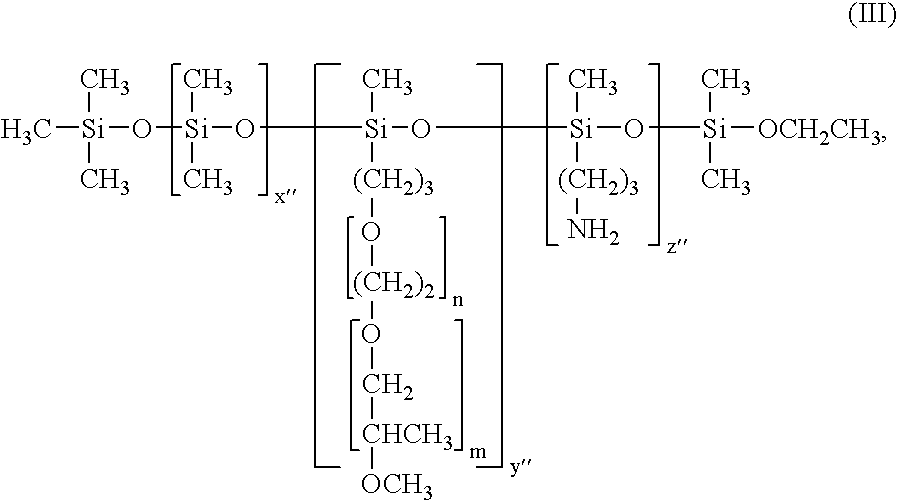Conditioner formulation
a technology of conditioner and formulation, applied in the field of conditioner formulation, can solve the problems oftangled, general unmanageable state, and hair in a dry, rough, lusterless, or frizzy condition, and achieve the effect of stable emulsion properties
- Summary
- Abstract
- Description
- Claims
- Application Information
AI Technical Summary
Benefits of technology
Problems solved by technology
Method used
Image
Examples
example 1
[0019]This example illustrates a process for preparing an exemplary composition of the present invention.
[0020]The list of ingredients and the amount of each ingredient (in wt % relative to the total weight of the composition) of Hair Conditioning Compositions 1A, 1B, 1C are and heated summarized in Table 1. The preparation of Hair Conditioning Compositions 1A, 1B, and 1C consists of a three-part process. Deionized water is placed in an appropriately sized vessel and heated, with stirring, to 80° C. Disodium EDTA is then added. When the temperature reaches 60° C. cetyl alcohol, stearyl alcohol, glyceryl stearate, stearalkonium chloride, cetrimonium chloride, and the bis-alkoxy-terminated glycol functionalized aminosilicone are added. Next, the non-functionalized aminosilicone is added and is mixed at high speed at a temperature of 80° C. for 25 minutes. After mixing for 25 minutes, the mixture is cooled to 50° C. and the pre-blend of silicones is added. This is then mixed at high sp...
example 2
[0022]This example illustrates the stability of exemplary formulations of the present invention. Composition 2A was prepared as described in Example 1. When submitted to a succession of three freeze-thaw cycles, composition 2A remained integrated. One freeze-thaw cycle consists of freezing the sample overnight in a freezer set at −20° C. and letting the sample warm up to room temperature. After three freeze-thaw cycles, compositions 1A, 1B, 1C, and 2A show no visible phase separation (whereas comparative compositions lacking an alkyl quaternary ammonium salt separate into two visible phases).
TABLE 2Hair Conditioning Composition2A (wt. %)Water86.90Disodium EDTA0.05Cetyl Alcohol3.50Stearyl Alcohol2.00Glyceryl Stearate0.60Stearalkonium Chloride0.60Cetrimonium Chloride1.30Dow Corning 85001.50Silsoft A-8430.50Dimethicone1.00Cyclomethicone1.50DMDM Hydantoin0.20Fragrance0.35
example 3
[0023]This example illustrates the stability of exemplary formulations of the present n at elevated storage temperatures. Compositions 1A, 1B, 1C, 2A, 3A and 3B (as described in Example 4) were stored at 45° C. for 2 weeks and showed no sign of separation.
PUM
| Property | Measurement | Unit |
|---|---|---|
| temperature | aaaaa | aaaaa |
| temperature | aaaaa | aaaaa |
| temperature | aaaaa | aaaaa |
Abstract
Description
Claims
Application Information
 Login to View More
Login to View More - R&D
- Intellectual Property
- Life Sciences
- Materials
- Tech Scout
- Unparalleled Data Quality
- Higher Quality Content
- 60% Fewer Hallucinations
Browse by: Latest US Patents, China's latest patents, Technical Efficacy Thesaurus, Application Domain, Technology Topic, Popular Technical Reports.
© 2025 PatSnap. All rights reserved.Legal|Privacy policy|Modern Slavery Act Transparency Statement|Sitemap|About US| Contact US: help@patsnap.com



